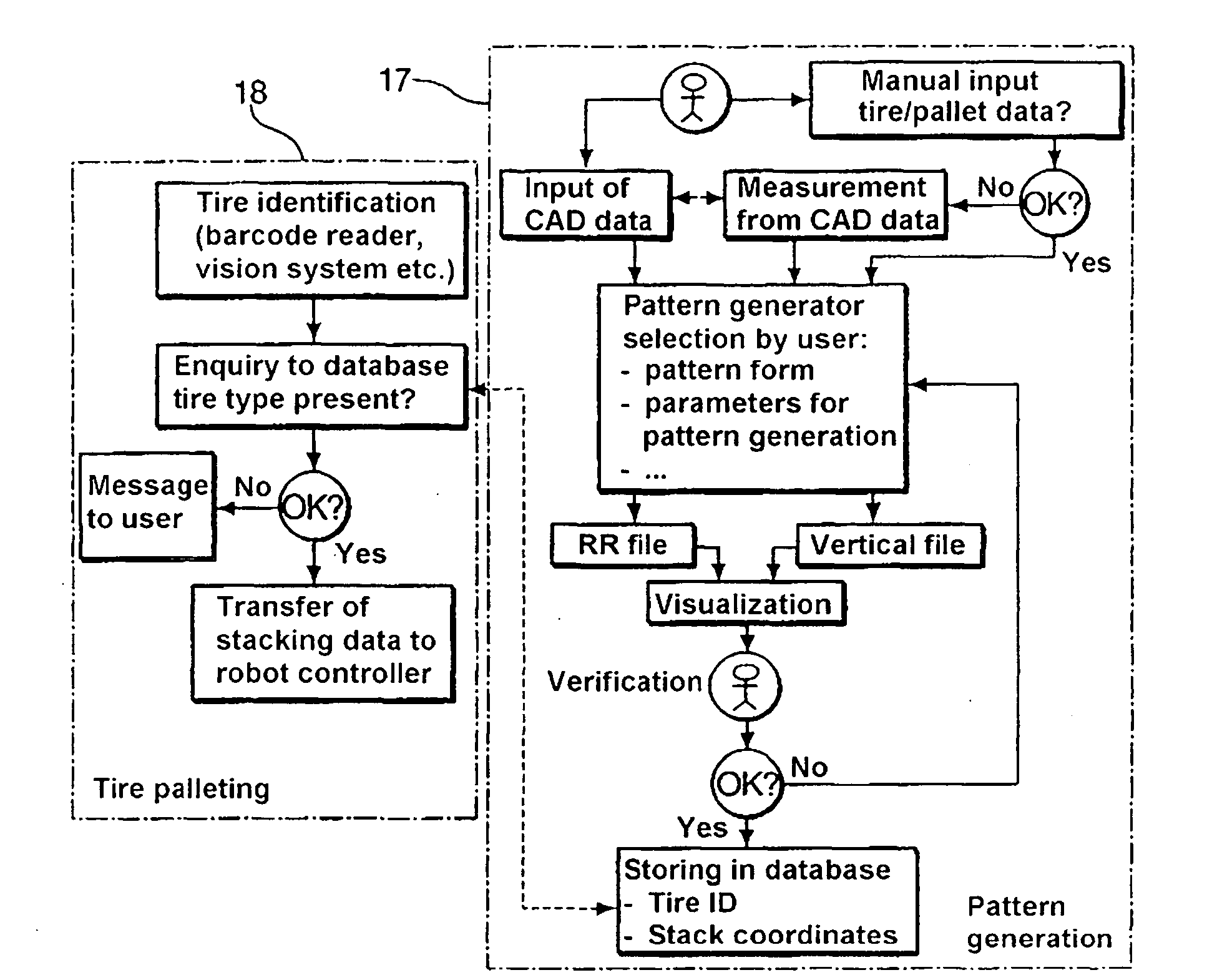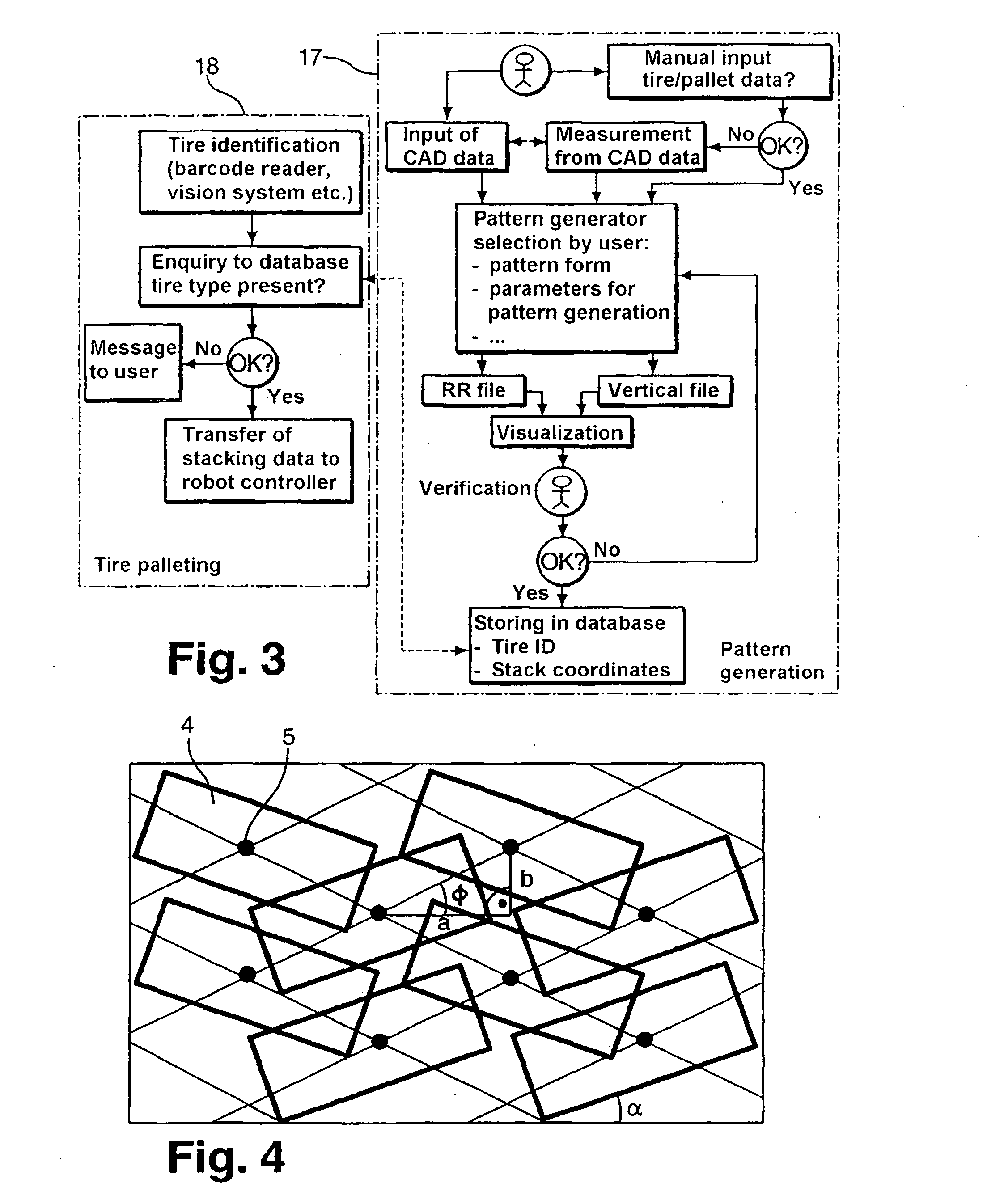Method and Device for Automatically Stacking Tires on a Support
a technology of automatic stacking and support, which is applied in the direction of application, computation using non-denominational number representation, complex mathematical operations, etc., can solve the problems of unsatisfactory manual stacking, no document discloses a method or a device, etc., and achieves the optimal stacking pattern, eliminates physical hard and monotonous stacking work, and protects the health of workers
- Summary
- Abstract
- Description
- Claims
- Application Information
AI Technical Summary
Benefits of technology
Problems solved by technology
Method used
Image
Examples
Embodiment Construction
[0011]The object is achieved with the method and the device according to claims 1 and 21. Advantageous embodiments of the method and the device are the subject matter of the dependent claims or can be inferred from the following description as well as the exemplary embodiments.
[0012]In the present method for automated stacking of tires on a support, geometrical data of the tires and / or a digital model of the tires are first prepared or generated. These geometrical data comprise data such as outside diameter, inside diameter, and tire width as well as possibly the rim width. A digital model of the tires can also be prepared or generated automatically from the geometrical data. Conversely, the geometrical data can also be deduced automatically from a digital tire model. On the basis of the geometrical data and / or the tire model and a predefinable size of the support, usually a pallet, a program or algorithm calculates a rick-rack pattern and / or a vertical pattern as a stacking pattern...
PUM
 Login to View More
Login to View More Abstract
Description
Claims
Application Information
 Login to View More
Login to View More - R&D
- Intellectual Property
- Life Sciences
- Materials
- Tech Scout
- Unparalleled Data Quality
- Higher Quality Content
- 60% Fewer Hallucinations
Browse by: Latest US Patents, China's latest patents, Technical Efficacy Thesaurus, Application Domain, Technology Topic, Popular Technical Reports.
© 2025 PatSnap. All rights reserved.Legal|Privacy policy|Modern Slavery Act Transparency Statement|Sitemap|About US| Contact US: help@patsnap.com



